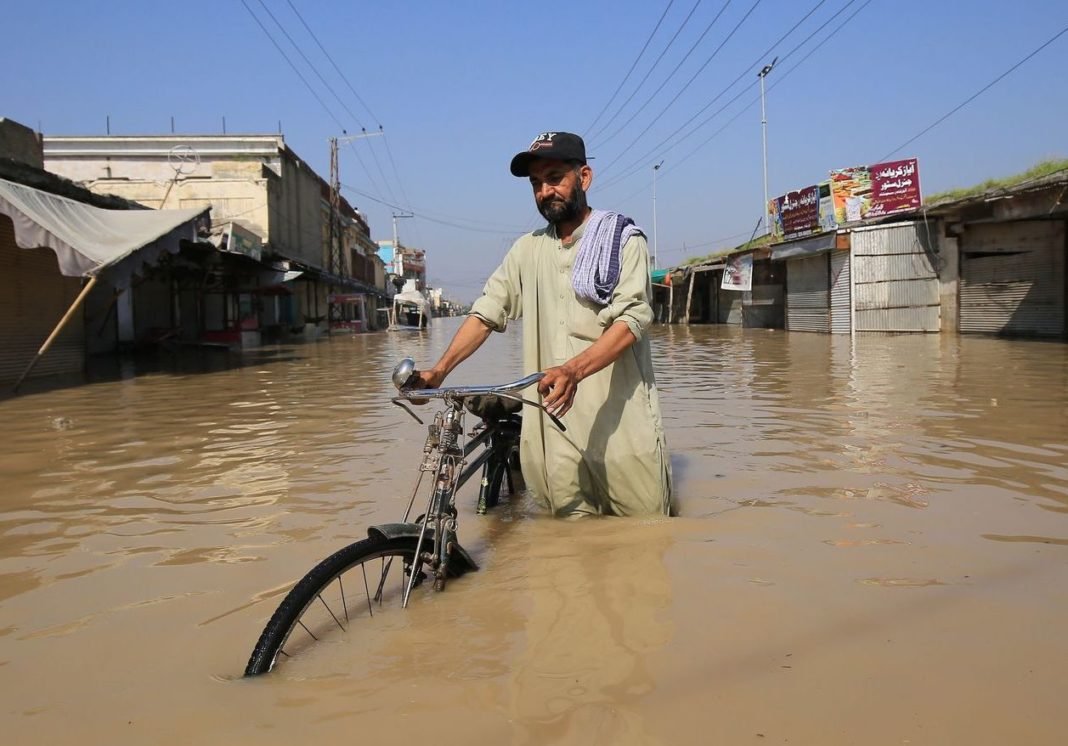Unusual climatic conditions have been the bane of the Southern Asian country this year. Between April and May, an intense and prolonged series of severe heat waves began=-09080 what can easily be categorised as one of the most severe consequences of the global climate change problem. The flooding disaster became a reality when regular monsoon rains began earlier than usual, beginning at the tail-end of June with very large volumes of rainfall. This early arrival in unrecognisably large volumes signalled a lengthier rainfall season with up to 3 times more rainfall than expected.
Since mid-June, the country has been tackling disastrous floods which have been described as far worse than the flash floods the nation experienced in 2010. On the 25th of August, the national government declared a national State of Emergency in response to the growing natural disaster, seeing as nearly one third of the country is now submerged under water.
Factors such as melting glaciers and busting glacier lakes in the northern mountainous regions contributed to the large volumes of water bursting the banks of rivers within the Pakistani region.
It is currently estimated that up to 33 million people country-wide have been displaced and 1.1 million houses completely destroyed. As of the morning of Wednesday, seventh of September, the death toll amounted to 1,325 lives lost, of which a significant proportion have been children. Exactly half of Pakistan’s 160 districts have been declared as ‘Calamity Hit’ by the national government, signalling that the situation continues to put a majority proportion of the population at risk. So far, the Southern Sindh Province has been the most adversely affected region in the country with the highest death toll compared to any other province.
Aside from the direct consequences of these floods, authorities also became aware of secondary and long-term effects that the nation will face. One pertinent secondary effect is the spread and very easy contraction of water-borne diseases like cholera. Health officials worry that floods will not only rapidly increase the number of water-borne diseases, but also the population’s vulnerability and scale of the emergency. Furthermore, extensive kilometres of road and infrastructure have been destroyed, intensifying food insecurity. Transporting food around the country continues to be an onerous task. Additionally, floods have submerged and severely eroded hectares of agricultural land, causing food resources to become more scarce, and putting Pakistan in a less self-reliant state – forcing the country to be heavily dependent on welfare packages.
Pakistan is home to six UNESCO World Heritage Sites and can easily be described as one of the world’s archeological wonders. Over the years, the tourism industry has been a great contributor to the country’s economy. However, current flooding has posed a major threat to these sites, such as the famous Mohenjo-Daro. The potential destruction of such sites leaves many doubtful and worried about the future economic prosperity of the country post-disaster.
The national government has mobilised resources at its disposal in an attempt to handle this issue as effectively as possible. So far, they have established the National Flood Response and Coordination Centre, which is being run by the national army. Additionally, the government has set up several medical and humanitarian camps in order to respond to the growing number of affected nationals. The Pakistani government has also been vocal in several international spaces appealing for foreign support. So far, France, Uzbekistan, and the United Arab Emirates have donated food, medical supplies, and other necessary tools needed to relieve the nation. Finally, the United Nations and Pakistani government published a joint appeal for $160 million in emergency aid.
As the global community continues to rally around Pakistan, there are several vital questions that need to be brought to the table where climate change and the global south are concerned. Like many other severely affected countries, Pakistan is one of the lowest emmittors and contributors to climate change. However, they are proving to be one of the most affected countries by this phenomenon. What policies can be put in place to protect and ease the burden of climate change on regions that are harshly affected by climate change? How do we hold the regions that contribute the most to climate change accountable?








